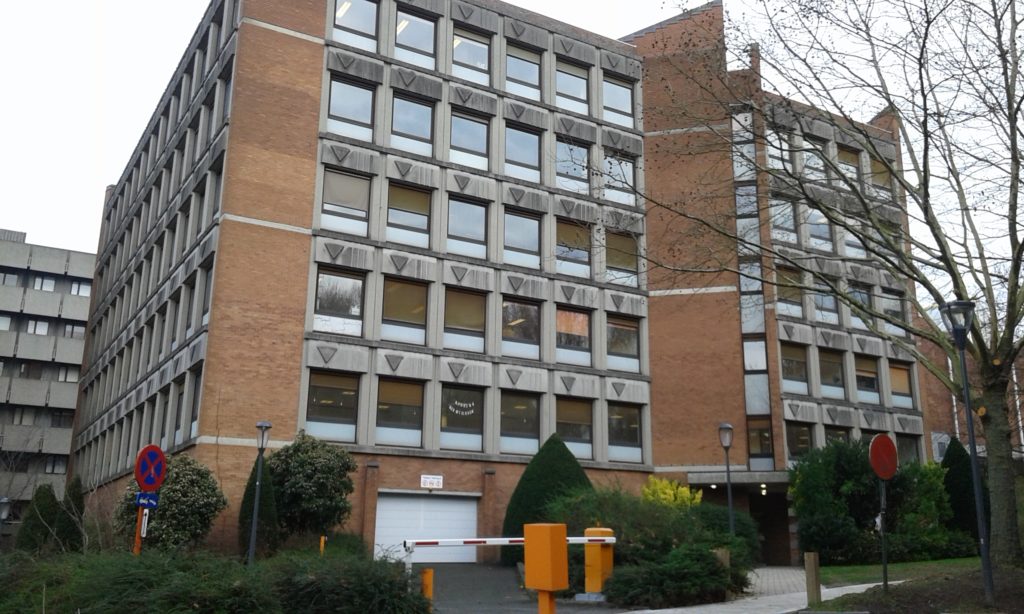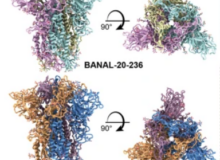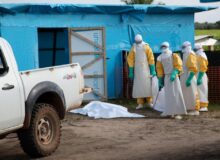By Hans Muilerman and Jonathan Latham, PhD
Current EU regulations forbid human exposure to pesticides that are classified as mutagenic, carcinogenic, reprotoxic (toxic for reproduction), persistent or capable of disrupting endocrine systems. By virtue of these and other protective measures EU regulations are considered the gold standard in public protection.
However, experts who are closely linked to industry (or are part of anti-regulation pressure groups) have taken control of the EU’s new Science Advice Mechanism (SAM). These experts have contributed to a report commissioned to reevaluate the EU’s authorisation of pesticides. The report, called “EU authorisation processes of Plant Protection Products”, and published in late 2018, recommends dramatically weakening the EU regulatory system. Especially notable is the adoption of many ideas previously proposed by the chemical industry.
For example, the EU currently deems the acceptable level of public exposure to mutagenic pesticides (those that damage DNA) to be zero. The new report recommends scrapping this standard of protection.
The history of the new SAM report is that it was requested by EU Health Commissioner Vytenis Andriukaitis. Its purpose was to determine how to act in cases of so-called ‘diverging views’; that is, when media and public interest groups get involved. The request follows a series of major controversies over EU regulatory decision-making. One such controversy was over the herbicide Glyphosate. A “European Citizens Initiative” delivered more than a million signatures to the EU Commission asking for a ban on Glyphosate. Several cities banned Glyphosate. Even a dairy company banned the use of Glyphosate by their farmers.
With this pressure from all over Europe, the EU Commission had difficulty reaching a decision since many EU member states (Bulgaria, Denmark, Czech Republic, Estonia, Ireland, Spain, Cyprus, Latvia, Lithuania, Hungary, the Netherlands, Poland, Romania, Slovakia, Finland and the U.K) opposed a ban. Ultimately, a very unusual 5-years extension for glyphosate was agreed but soon the discussion will start again.
Issues with neonicotinoids have also pushed the EU Commission into a corner. Neonicotinoid insecticides are linked by much research to ‘bee colony collapse’ and, according to the International Union for the Conservation of Nature “represent a worldwide threat to biodiversity, ecosystems and ecosystem services” (Goulson, 2013; IUCN 2017). This again placed the EU Commission in the crossfire since many EU member states and their ministries of agriculture wished to keep neonicotionids on the market. Waves of scientific publications and media attention about dying bees and empty beehives forced the EU Commission to finally ban them. Nevertheless, Poland, Romania, Hungary, and Lithuania still resist the ban by using derogations.
A third big controversy has been endocrine disruption. Public concern about hormone-mimicking chemicals forced politicians in 2009 to address endocrine disruption concerns in the regulations and ban endocrine disrupting pesticides. An enormous lobbying effort from industry, the US chamber of commerce, EU Directorate General (DG) Enterprise, and EU DG Growth, tried to stop the implementation of the new rules, especially during the TTIP trade negotiations with the US. EU DG Environment was isolated and in the end DG SANTE (health) was found willing to do the dirty work of undermining the rules. Again, waves of bad publicity from the public and scientists harmed the credibility of the EU Commission. This debate too is far from over.
Conflicted science advice
The SAM report is important since it will soon be used by the EU Commission as an input for its ‘REFIT’ programme to evaluate pesticide regulation. This is a programme that the chemical industry sees as a major opportunity for a regulatory roll-back.
Some of the experts invited to help SAM and listed on the SAM website, however, are not independent. Instead, they have strong links to the International Life Sciences Institute (ILSI). ILSI is a worldwide network, a federation of non-profits funded by many industries, including the pesticide industry, and which provides expertise in regulatory issues.
ILSI global includes over 400 company members and ILSI Europe includes 88. Among them are every pesticide multinational.
Sourcewatch writes of ILSI that: “The interests of food, pharmaceutical, tobacco, energy, and other industries have become even more entwined. They have learned to cooperate (rather than blaming each other for the cancer epidemic) and they now form coalitions to fight health and environmental regulations.
“It is notable that [ILSI members] generally employ the same lawyers, lobbyists and PR companies, and use essentially the same tactics”.
ILSI has a negligible public profile, and claims not to be a lobby group, but is very active behind the scenes in obtaining seats for ILSI-associated scientists on regulatory panels such as that of the EU Food Safety Authority (EFSA) and international organisations like WHO, the World Health Organisation, the Food and Agriculture Organisation (FAO) of the UN, and the International Programme on Chemical Safety (IPCS) of the WHO. Experts generally do not disclose their links to ILSI and pretend to be independent academic scientists.
A recent example of ILSI members successfully getting seats on an EFSA-panel concerned the risk assessment idea of a Threshold of Toxicological Concern (TTC). This idea assumes chemicals are safe at low doses without (expensive) testing. It has been an important goal of the chemical industry to establish TTCs in European and other jurisdictions.
PAN Europe has analysed the process of developing guideline for the TTC at the European Food safety Authority EFSA. We discovered that the chair of the EFSA working group was Sue Barlow, who worked for ILSI and the cigarette industry. She had volunteered to be chair of the EFSA working group. From this position she installed an ILSI network. This EFSA working group then more-or-less copy-pasted the ILSI proposal, making it into an EFSA opinion.
ILSI has been imposing its ideas on many other current EU risk assessment methods too, intending to weaken protections and ease access of pesticides to the market. Thus a PAN Europe survey showed that out of 12 EU pesticide risk assessment methods analysed, 8 were designed and promoted by ILSI. Industry is being allowed, under the radar, to “write its own rules”.
The conflicted scientists
In the case of the SAM, a prime example of these conflicts is UK professor Alan Boobis who is listed on the SAM website as a contributor to the SAM report. Alan Boobis has been active in ILSI for decades. Until January 2018 he was the chair of its Board of Trustees. Due to his conflicts of interest Boobis was disbarred from a new expert panel convened by EFSA in 2012.
French professor Dominique Parent-Massin is mentioned alongside Boobis as working on the SAM report. Prof. Parent-Massin has previously worked with ILSI member, Ajinomoto – the world’s biggest Aspartame producer.
Also listed on the SAM website is Joergen Schlundt, former Director of the Danish National Food Institute. Schlundt is also a former ILSI board member .
All three are listed on the SAM-website as contributors to the report, or as providers of evidence through another report written by a new network called Science Advice for Policy by European Academies (SAPEA), or as being part of a ‘sounding board’ and fact-checking process. Despite these counter-indications the SAM website states that “The Commission found that none of the interests declared constituted a conflict of interest.”
Another expert used by the SAM is German professor Daniel Dietrich, editor-in-chief of the journal Chemico-Biological Interactions. With a group of editors of journals of pharmacology and toxicology he has been very vocal in trying to stop the regulation and banning of endocrine disrupting pesticides (in EU Regulation 1107/2009). Dietrich published editorials in several scientific journals that triggered highly critical responses from other scientists, such as members of the ‘Endocrine Society’. Ties between the Dietrich group of authors and industry were exposed by Le Monde journalist Stéphane Horel who found 17 out of the 18 experts of Mr. Dietrich’s group have past or current ties to industry. The Dietrich group has been prolific, publishing articles like ‘Endocrine disruption: Fact or urban legend?’ that disputes the health risks of endocrine disruption (Nohynek et al., 2013). Even after former EU science advisor Anne Glover achieved a consensus between opposing groups that toxicological thresholds below which chemicals are safe (see TTC above) were unproven, Dietrich and his group (along with Alan Boobis) still claimed their opponents used “pseudoscience” (Dietrich et al., 2016). Dietrich also opposed the EU ban of bee-harming neonicotinoids, and both Dietrich and Boobis criticized the IARC-report asserting the genotoxicityof Glyphosate.
Conflicts in EU science advice
The EU has mechanisms to prevent conflicts of interest from derailing its scientific decisions. The SAM website currently presents ‘Declarations of Interest’ (DoI) for its members including for Boobis, Parent-Massin, Dietrich, and Schlundt. But one might wonder if procedures to report conflicts of interest are functioning. DoI’s were not available online when the SAM-report was published (in June 2018). One was even not signed until considerably after publication, in August 2018.
The efforts of ILSI have so far been effective. Several of its campaigning targets are included in an important “SAPEA evidence review report“. SAPEA (Science Advice for Policy by European Academies) is a new body set up by European science academies. This evidence review is intended to feed into the SAM report and featured many of the conflicted scientists above. SAPEA’s report promotes many industry objectives, such as the use of ‘historical control data’. The great importance of this is that, since many potential historical controls exist, their use makes it much easier to ascribe toxic effects observed in animal testing as being simply noise and therefore irrelevant.
Another industry goal is to promote inexpensive (in vitro) ‘mode-of-action assessment’ in preference to expensive adverse outcome testing. A third is to drop the obligation for chronic mouse testing.
The aims of PAN Europe and the Endocrine Society, on the other hand, are: 1) to recognise the reality of ‘low dose effects’ which are currently not tested at all for pesticides; 2) the recognition that chemicals may cause non-linear toxicity responses over a wide range of doses. These are called ‘non-monotonic dose-effect responses’ (whereas regulators presently acknowledge only linear dose-response curves of toxicity and even dismiss effects entirely if they are not linear); 3) mandatory testing for endocrine disruption; 4) to dispute the current regulatory assumption that chemicals have safe thresholds. All are missing from the SAPEA report.
In a further blow to precaution, the SAM report proposes to change EU rules by exchanging the acceptable level of citizen protection from “do not have any harmful effects on humans” for an undefined level, that of “acceptable risk”. This is the change of regulation that would make human harm legal, since it would stop the EU’s much-detested-by-industry ‘hazard approach’ that aims to avoid any exposure of humans to classified (mutagenic, carcinogenic, reprotoxic (toxic for reproduction), persistent and endocrine disrupting) pesticides.
SAM proposes that the EU should re-examine this ‘hazard approach’, which has been under attack by industry for many years; and so it seems that SAM might prove to be the instrument by which industry finally achieves successes for which they have campaigned so long.
The EU has shown itself sensitive to public pressure. What is now needed is for that pressure to be redoubled.
References
Goulson, D. (2013) An overview of the environmental risks posed by neonicotinoid insecticides. Journal of Applied Ecology 50: 977–987.
Nohynek, G.J., C. J. Borgert, D. Dietrich, and K. K. Rozmand (2013) Endocrine disruption: Fact or urban legend?, Toxicology Letters 223 295– 305.
Dietrich et al., (2016) Allowing pseudoscience into EU risk assessment processes is eroding public trust in science experts and in science as a whole: The bigger picture. Chemico-Biological Interactions 257 (2016) 1-3.
Dietrich et al., (2013) Open letter to the European commission: scientifically unfounded precaution drives European commission’s recommendations on EDC regulation, while defying common sense, well‑established science, and risk assessment principles. Arch Toxicol (2013) 87:1739–1741.
Hans Muilerman works at PAN Europe and is based in Brussels.
Originally published on Independent Science News:




